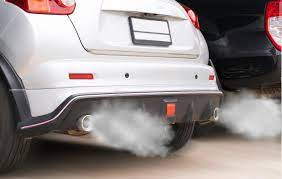
Today we shall be talking about Catalytic converter. What it is and the kind of work it does in your car. Knowing this will help you know when it not functioning, so that attention could be given to it effectively.
Catalytic converter is an exhaust emission control device that converts toxic gases and pollutants in exhaust gas from an internal combustion engine into less-toxic pollutants by catalyzing a redox reaction (an oxidation and a reduction reaction). How does it do this?
To clean the exhaust. Now, considering how fuel contains carbon and hydrogen, and reacts with air, which contains oxygen, you are not going to avoid emissions of CO2 and H2O (yes, water vapor), but your engine will also produce numerous other substances that might be avoided.
When combustion is incomplete, fuel doesn’t react all the way to CO2, some of it may stop at CO, which is nasty stuff. In the catalytic converter this halfway-combusted product gets a second chance to react with oxygen in order to proceed to become less nasty CO2. Also, some fuel hasn’t even begun to react with air; it is still just a hydrocarbon, which you don’t want to emit into the city air either, so ideally this will also be burned in the converter to form CO2 and H2O.
Also, air contains a lot of nitrogen in addition to oxygen, and in the heat and pressure encountered inside the cylinder some of this nitrogen will form molecules together with oxygen, rather than stay separate gases, so you get vile things such as NO and NO2 (commonly grouped as NOx, and components of so-called smog and acid rain). The catalytic converter tries to split these back up to their component gases, becoming harmless N2 and O2 (with the O2 then being used to help the CO and hydrocarbons mentioned in the previous paragraph complete their reaction into CO2). Let’s take Catalytic converter break down functions.
- Catalytic converters are used in vehicles to convert exhaust emissions to environment friendly gases.
- Exhaust gases include NOx (N2O & NO2), CO (Carbon monoxide), HC (hydrocarbons), Soot. These gases are converted to Nitrogen (N2), Carbon dioxide (CO2) , Water Vapor (H2O).
- There are two types of reactions that take place ie. oxidation and reduction reaction
- There is also DOC (diesel oxidation catalyst) catalysts for diesel engine vehicles.
- There are of two types metallic or ceramic. Usually metallic are used for two & three wheelers and ceramic for four wheelers or larger vehicles.
- In all catalytic converters, precious metals are used in different fractions.
- Larger engine requires larger converter which needs to tackle large flow exhaust emissions.
- Converters are also used in stationary engines like generators etc. and also used in chimneys that give out large amount of gases to environment.







